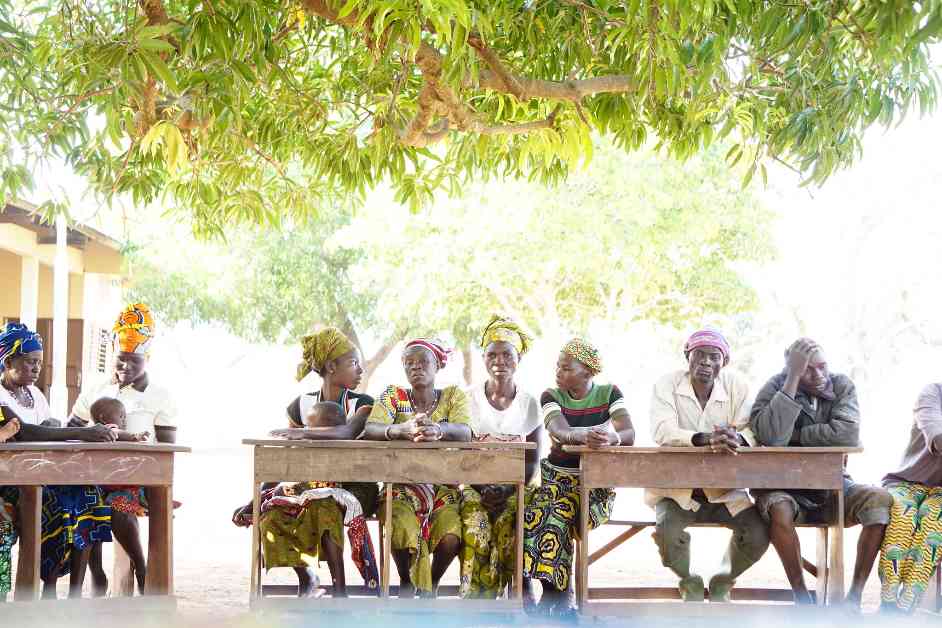In recent years, amidst a surge in global conflicts and a decade of soaring temperatures, climate adaptation initiatives have faced unprecedented challenges. While the spotlight often shines on wars in Eastern Europe and the Middle East, lesser-known conflicts continue to ravage communities worldwide. According to the Peace Research Institute Oslo, a staggering 59 conflicts were reported in 2023, marking the highest tally since the Second World War’s conclusion.
Addressing the misconception that climate adaptation takes a back seat in conflict-ridden regions, groundbreaking research from the Adaptation Fund sheds light on successful projects thriving in fragile states and conflict-affected territories. With a remarkable investment of $1.2 billion across 180 projects globally, it comes as no surprise that some initiatives operate within potential conflict zones. From war-torn Mali to regions susceptible to sudden violence outbreaks, these projects tackle the urgent need for adaptation amidst adversity.
Key Factors for Success in Conflict Zones
The study underscores pivotal factors enhancing project outcomes in conflict zones, emphasizing the necessity of bolstering institutions, promoting local ownership of financing, fostering flexibility in climate funding, nurturing robust partnerships, and implementing rigorous monitoring mechanisms. Recognizing the interconnected nature of climate risks across borders, the destabilizing effects of climate change on institutions, communities, and resources have raised grave concerns. The Intergovernmental Panel on Climate Change’s 2022 report highlighted the escalating conflict risks in Africa linked to rising temperatures and drought, underscoring the urgency for proactive intervention.
Mikko Ollikainen, the head of the Adaptation Fund, emphasized the heightened vulnerabilities of conflict-affected nations to climate change impacts, stressing the critical need for external support in these fragile settings. Emphasizing the imperative of fortifying institutions and fostering collaborative partnerships across governmental, civil, and private sectors, Ollikainen emphasized the pivotal role of effective climate finance delivery in conflict zones.
Water Conservation in Ethiopia: A Case Study
Illustrating the intricate challenges faced in conflict zones, a climate-smart agriculture project in Ethiopia exemplifies the complexities of navigating conflict-ridden territories. Amidst a $10-million initiative spanning from 2017 to 2022, the project aimed to enhance resilience across seven ‘woredas’ vulnerable to drought. Notably, Tigray, a district embroiled in intense government-paramilitary clashes, spotlighted the project’s adaptability and resilience in the face of conflict disruptions.
While conflict upheavals delayed infrastructure development in Tigray, the project pivoted towards strengthening institutional capacity and fostering community awareness and ownership in other districts. The initiative’s long-term impact was evident through local community engagement in training on new water facilities, significantly reducing water stress and enhancing sustainable agriculture practices. With over 15,000 households gaining access to safe drinking water and 8,500 farmers trained in irrigation, the project’s success lay in reducing conflict triggers exacerbated by climate-induced freshwater scarcity.
Cristina Dengel, the Adaptation Fund’s knowledge management officer, lauded the project’s transformative impact on conflict reduction, underscoring the potential of climate adaptation interventions to foster peace and resilience in conflict zones. The success story in Ethiopia serves as a blueprint for larger-scale projects funded by the Green Climate Fund, heralding a new era of climate resilience in conflict-affected regions.
Building Trust in Conflict-Affected Regions
Navigating conflict-affected territories demands a paradigm shift in project implementation strategies, as exemplified by the challenges faced in Ethiopia’s Tigray region. With security constraints impeding operations in Tigray, the project’s focus pivoted towards maximizing outcomes and mitigating conflict risks in other districts. Speaking at a COP29 event on adaptation in conflict zones, Srilata Kammila, the head of climate change adaptation at the United Nations Development Programme, highlighted the complexities of working in fragile states, emphasizing the critical role of community trust-building in designing effective adaptation projects.
Flexibility in adapting to evolving conflict dynamics and empowering communities in project design and implementation emerged as pivotal strategies in mitigating conflict triggers amidst worsening climate extremes. Ollikainen’s vision of applying lessons learned from conflict zones like Ethiopia to future interventions underscores the urgent need for sustained support and resilience-building in conflict-affected regions. As echoes of conflict continue to reverberate across vulnerable populations grappling with climate crises, a steadfast commitment to community empowerment and adaptive strategies remains the cornerstone of climate adaptation success.
Adam Wentworth, a Brighton-based freelance writer, captures the essence of climate adaptation resilience amidst conflict challenges, shedding light on the transformative power of community-driven initiatives in conflict zones. As conflicts persist and climate crises escalate, the imperative to stand in solidarity with vulnerable communities underscores the indomitable spirit of resilience in the face of adversity.











